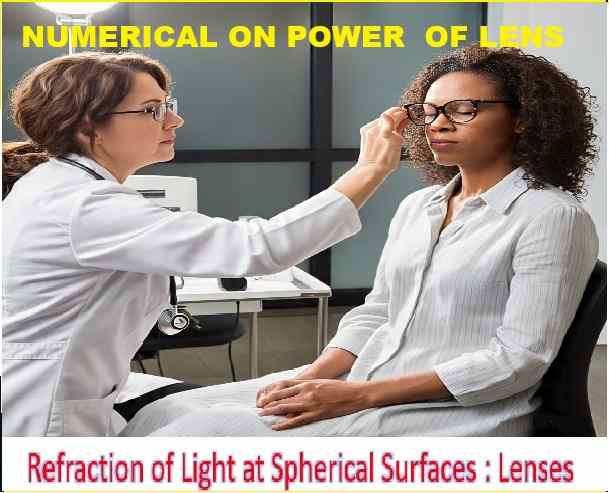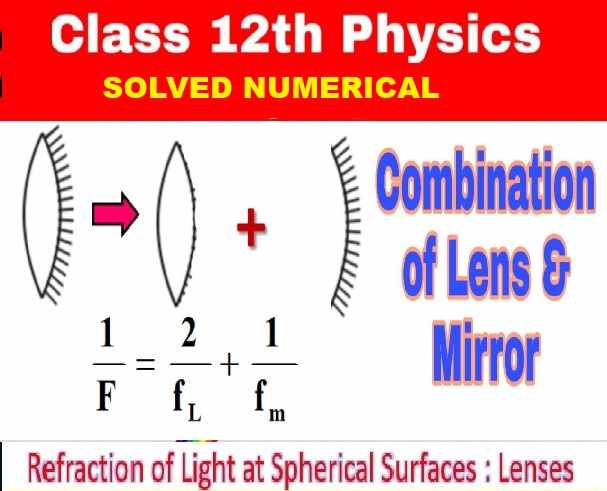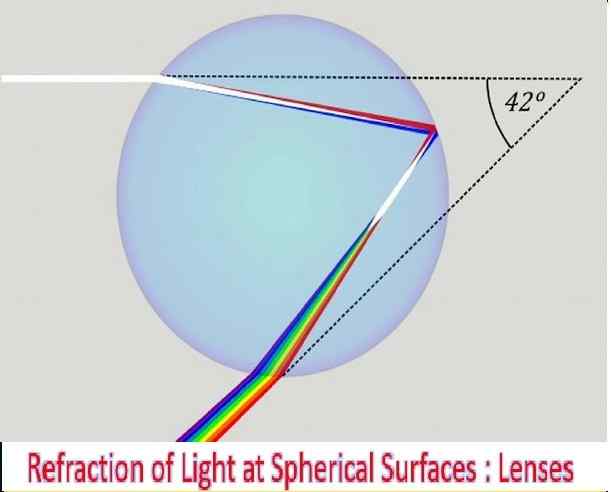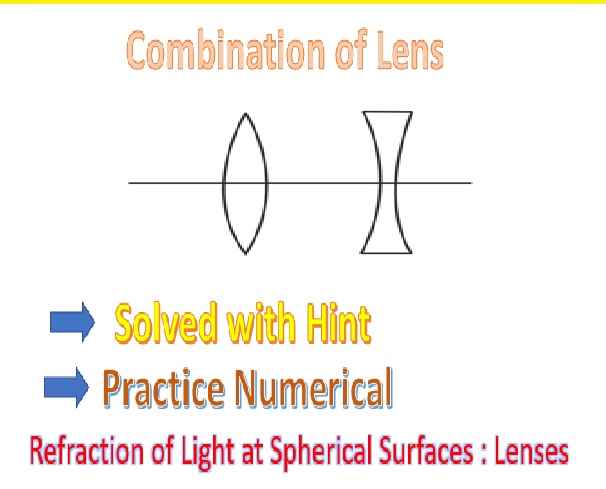Power of the Lens Numerical Class-12 Nootan ISC Physics Solution Ch-16 Refraction of Light at Spherical Surfaces : Lenses. Step by step solutions of Kumar and Mittal Physics of Nageen Prakashan as council latest prescribe guideline for upcoming exam. Visit official Website CISCE for detail information about ISC Board Class-12 Physics.
Power of the Lens Numerical Class-12 Nootan ISC Physics Solution Ch-16 Refraction of Light at Spherical Surfaces : Lenses

| Board | ISC |
| Class | 12 |
| Subject | Physics |
| Book | Nootan |
| Chapter-16 | Refraction of Light at Spherical Surfaces : Lenses |
| Topics | Numericals on Power of the Lens |
| Academic Session | 2025-2026 |
Numericals on Power of the Lens
Class-12 Nootan ISC Physics Solution Ch-16 Refraction of Light at Spherical Surfaces
Que-50: The focal length of a lens is + 0.5 m. What is its power?
Ans- P = 1/f
=> 1/0.5 = 2 D
Que-51: The focal length of a lens is – 50 cm. What is its power?
Ans- P = 1/f
=> 1/-0.5 = -2 D
Que-52: The power of a lens is + 5 D. What is its focal length and nature?
Ans- f = 100/P
=> 100/5 = 20 cm , convex
Que-53: The radius of curvature of each surface of a convex lens of refractive index 1.5 is 40 cm. Calculate its power.
Ans- P = 1/f = (1μ2-1) (1/R1 + 1/R2)
=> (1.5-1)(1/0.4 + 1/0.4)
=> 2.5 D
Que-54: A person uses spectacles of power – 0.5 D for distant vision. How far is the far point of the person?
Ans- far point for myopia
=> f = 100/P
=> 100/-0.5 = -200 cm
Que-55: A lens has a power of + 5 D in air. What will be its power when immersed deep in water?
Ans- fa = 10/5 = 20 cm
again Pa/Pw = aμg-1 / (aμg/wμg)-1
=> (3/2)-1 / (9/8)-1
=> Pa/Pw = 4/1
=> Pw = Pa/4 = 5/4 = 1.25 D
Que-56: Two thin lenses of focal lengths 15 cm and 30 cm are placed in contact. What is the power of the system?
Ans- 1/f = 1/15 + 1/30
=> 2+1/30 = 1/10
f = 10 cm = 0.1 m
P = 1/f = 1/0.1 = 10 D
Que-57: A convex lens of focal length 30 cm is placed in contact with a concave lens of focal length 20 cm. Find the focal length and power of the combination. Is the combination converging or diverging?
Ans- 1/f = 1/f1 + 1/f2
=> 1/f = 1/30 – 1/20
=> f = -60 cm (diverging)
Power = -1/0.6 = -1.67 D
Que-58: Lenses of powers + 3 D and – 5 D are combined to form a compound lens. An object is placed at a distance of 50 cm from this lens. Calculate the position of its image.
Ans- P = 3D + (-5D) = -2D
f = 100/-2 = -50 cm
now m = f/f+u = v/u
=> -50/-50-50 = v/-50
=> v = -25 cm
Que-59: A combination consisting of a concave lens in contact of a convex lens of focal length 25 cm produces a real image at a distance of 80 cm when an object is placed at a distance of 40 cm from the combination. Find the focal length and power of the concave lens.
Ans- f = uv/u-v
=> f = -40 x 80 / -40-80
=> -3200/-120 = 80/3
now 1/f = 1/f1 + 1/f2
=> 3/80 = 1/25 + 1/f2
=> f2 = -400 cm = -4 m
P = 1/f
=> -1/4 = -0.25 D
— : Power of the Lens Numerical Class-12 Nootan ISC Physics Solution Ch-16 Refraction of Light at Spherical Surfaces : Lenses :–
Return to : – Nootan Solutions for ISC Class-12 Physics
Thanks
Please share with your friends


